2016 California Standards for Accessible Design Pocket Guide - Eff. Jan. 1, 2017
11B-406 Curb ramps, blended transitions and islands.
[2010 ADAS] 406 Curb Ramps
ETA Editor's Note
The differences between 2010 ADAS Section 406 and CBC Section 11B-406 are numerous, as indicated by the italicized text, which is used by DSA-AC to identify departures from ADA requirements. The CBC requirements in this section are more stringent. Parallel curb ramps and blended transitions, although permitted by 2010 ADAS, are not defined or given special attention. Islands are addressed at 2010 ADAS 406.7, almost identical to CBC, except for detectable warnings. See also U.S. Access Board's Note to Reader at Detectable Warnings.
11B-406.1 General.
Curb ramps, blended transitions and islands on accessible routes shall comply with Section 11B-406. Curb ramps may be perpendicular, parallel, or a combination of perpendicular and parallel.
[2010 ADAS] 406.1 General. Curb ramps on accessible routes shall comply with 406, 405.2 through 405.5, and 405.10.
11B-406.1.1 Perpendicular curb ramps.
Perpendicular curb ramps shall comply with Section 11B-406.2.
11B-406.1.2 Parallel curb ramps.
Parallel curb ramps shall comply with Section 11B-406.3.
11B-406.1.3 Blended transitions.
Blended transitions shall comply with Section 11B-406.4.
11B-406.1.4 Islands.
Islands shall comply with Section 11B-406.6.
11B-406.2 Perpendicular curb ramps.
Perpendicular curb ramps shall comply with Sections 11B-406.2 and 11B-406.5.
11B-406.2.1 Slope.
Ramp runs shall have a running slope not steeper than 1:12.
11B-406.2.2 Sides of curb ramps.
Where provided, curb ramp flares shall not be steeper than 1:10.
FIGURE 11B-406.2.2 ‡‡
SIDES OF CURB RAMPS
11B-406.3 Parallel curb ramps.
Parallel curb ramps shall comply with Sections 11B-406.3 and 11B-406.5.
11B-406.3.1 Slope.
The running slope of the curb ramp segments shall be in-line with the direction of sidewalk travel. Ramp runs shall have a running slope not steeper than 1:12.
11B-406.3.2 Turning space.
A turning space 48 inches (1219 mm) minimum by 48 inches (1219 mm) minimum shall be provided at the bottom of the curb ramp. The slope of the turning space in all directions shall be 1:48 maximum.
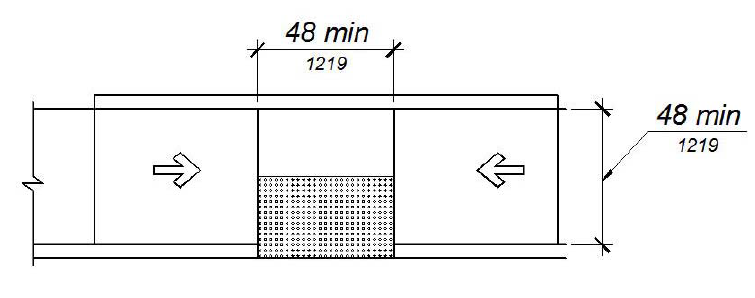
FIGURE 11B-406.3.2 ‡‡
PARALLEL CURB RAMPS
11B-406.4 Blended transitions.
Blended transitions shall comply with Sections 11B-406.4 and 11B-406.5.
11B-406.4.1 Slope.
Blended transitions shall have a running slope not steeper than 1:20.
11B-406.5 Common requirements.
Curb ramps and blended transitions shall comply with Section 11B-406.5.
11B-406.5.1 Location.
Curb ramps and the flared sides of curb ramps shall be located so that they do not project into vehicular traffic lanes, parking spaces, or parking access aisles. Curb ramps at marked crossings shall be wholly contained within the markings, excluding any flared sides.
Exception: Diagonal curb ramps shall comply with Section 11B-406.5.9.
11B-406.5.2 Width.
The clear width of curb ramp runs (excluding any flared sides), blended transitions, and turning spaces shall be 48 inches (1219 mm) minimum.
11B-406.5.3 Landings.
Landings shall be provided at the tops of curb ramps and blended transitions. The landing clear length shall be 48 inches (1219 mm) minimum. The landing clear width shall be at least as wide as the curb ramp, excluding any flared sides, or the blended transition leading to the landing. The slope of the landing in all directions shall be 1:48 maximum.
Exception: Parallel curb ramps shall not be required to comply with Section 11B-406.5.3.
Some designs have been proposed that reduce or omit the level top landing by providing a curb ramp with flared sides of 1:12 or less. This design is not compliant with the building code and may result in a condition where a wheelchair user cannot safely turn and proceed along the intersecting walk. Section 11B-403.5.1, Exception 3, requires walks and sidewalks to be 48” wide minimum; Section 11B-403.3 requires walks and sidewalks to have a cross-slope of 1:48 or less. In this example, reducing or omitting the top landing of the curb ramp may result in a substandard walk width and/or a walk with a cross-slope in excess of 1:48.◼
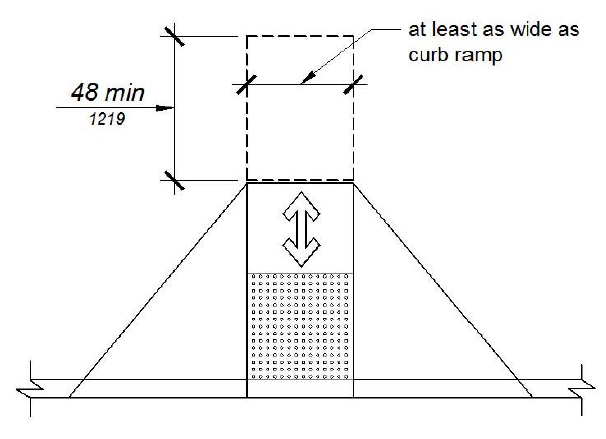
FIGURE 11B-406.5.3 ‡‡
LANDINGS AT THE TOP OF CURB RAMPS
11B-406.5.4 Floor or ground surfaces.
Floor or ground surfaces of curb ramps and blended transitions shall comply with Section 11B-405.4.
11B-406.5.5 Wet conditions.
Curb ramps and blended transitions shall comply with Section 11B-405.10.
11B-406.5.6 Grade breaks.
Grade breaks at the top and bottom of curb ramp runs shall be perpendicular to the direction of the ramp run. Grade breaks shall not be permitted on the surface of ramp runs and turning spaces. Surface slopes that meet at grade breaks shall be flush.
11B-406.5.7 Cross slope.
The cross slope of curb ramps and blended transitions shall be 1:48 maximum.
11B-406.5.8 Counter slope.
Counter slopes of adjoining gutters and road surfaces immediately adjacent to and within 24 inches (610 mm) of the curb ramp shall not be steeper than 1:20. The adjacent surfaces at transitions at curb ramps to walks, gutters, and streets shall be at the same level.

FIGURE 11B-406.5.8
COUNTER SLOPE OF SURFACES ADJACENT TO CURB RAMPS
11B-406.5.9 Clear space at diagonal curb ramps.
The bottom of diagonal curb ramps shall have a clear space 48 inches (1219 mm) minimum outside active traffic lanes of the roadway. Diagonal curb ramps provided at marked crossings shall provide the 48 inches (1219 mm) minimum clear space within the markings.
11B-406.5.10 Diagonal curb ramps.
Diagonal or corner type curb ramps with returned curbs or other well-defined edges shall have the edges parallel to the direction of pedestrian flow. Diagonal curb ramps with flared sides shall have a segment of curb 24 inches (610 mm) long minimum located on each side of the curb ramp and within the marked crossing.
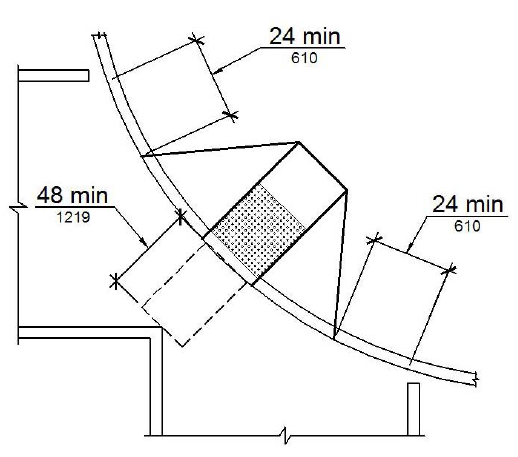
FIGURE 11B-406.5.10 ‡‡
DIAGONAL OR CORNER TYPE CURB RAMPS
11B-406.5.12 Detectable warnings.
Curb ramps and blended transitions shall have detectable warnings complying with Section 11B-705.
U.S. Access Board's Note to Reader:
The Department of Transportation's ADA Standards require detectable warnings on curb ramps:
[ADA Title II - Public Transportation] 406.8 Detectable Warnings. A curb ramp shall have a detectable warning complying with 705. The detectable warning shall extend the full width of the curb ramp (exclusive of flared sides) and shall extend either the full depth of the curb ramp or 24 inches (610 mm) deep minimum measured from the back of the curb on the ramp surface.
11B-406.6 Islands.
Raised islands in crossings shall be cut through level with the street or have curb ramps at both sides. The clear width of the accessible route at islands shall be 60 inches (1524 mm) wide minimum. Where curb ramps are provided, they shall comply with Section 11B-406. Landings complying with Section 11B-406.5.3 and the accessible route shall be permitted to overlap. Islands shall have detectable warnings complying with Section 11B-705.
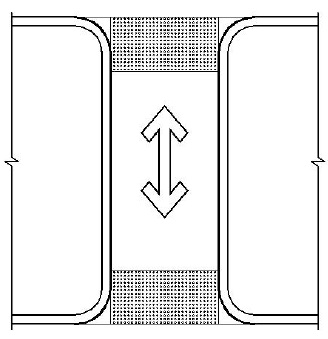
(a)
cut through at island
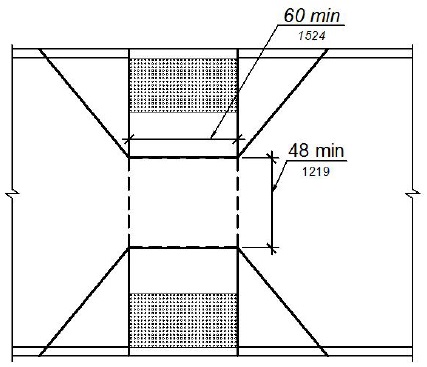
(b)
curb ramp at island
FIGURE 11B-406.6 ‡‡
ISLANDS IN CROSSINGS

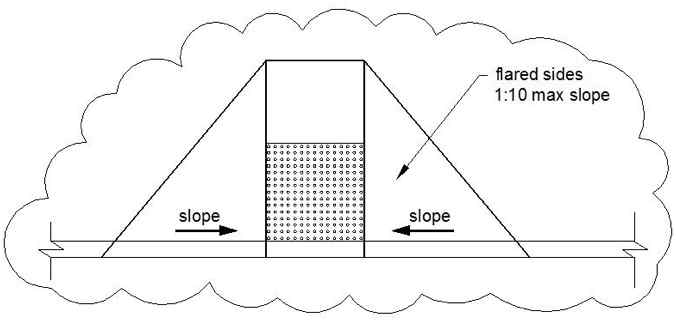

User Comments/Questions
Add Comment/Question